Inbox and Environment News: Issue 398
March 24 - 30, 2019: Issue 398
Autumn In Pittwater 2019: A Rainy Week
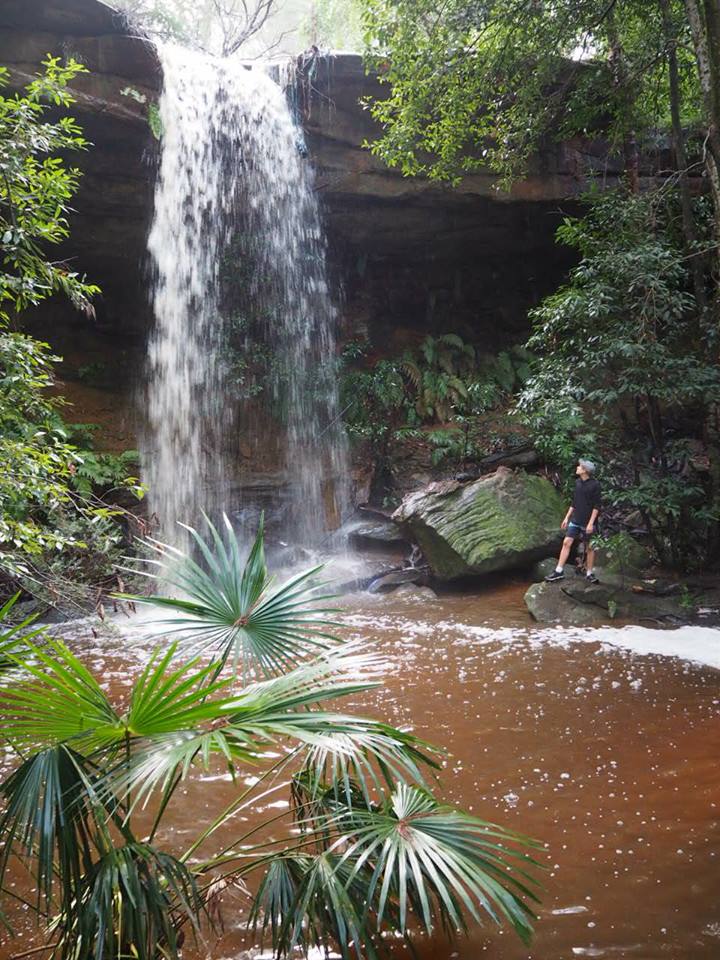
Mona Vale - at Narrabeen Creek Falls. Photo by Dave Murray taken the afternoon of Sunday March 17th.
Dave says "These falls are just below Mona Vale Rd and opposite where Lane Cove Road is blocked off. We had to scramble cross country through the scrub for an hour from Laurel Road to get there."
This is near where parts of 'Lantana', Australian epic, was filmed.
Not in Pittwater - but adjacent to - a reminder of what 'flows' elsewhere during the rains we've seen this week:
For more, please visit: Pittwater’s Parallel Estuary: The Cowan ‘Creek’ (History) or
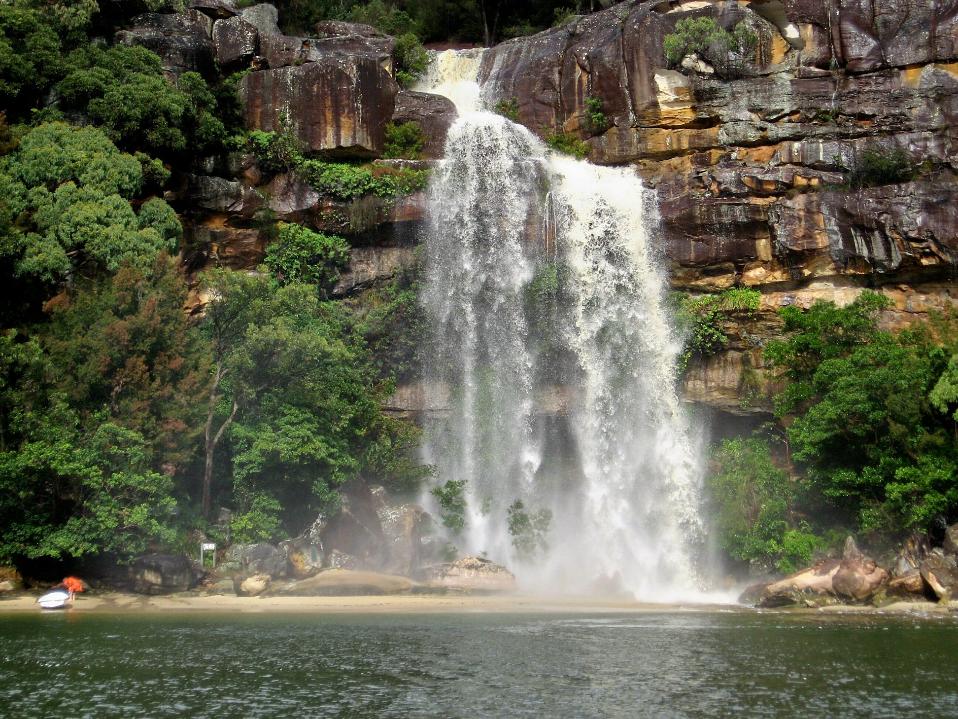
ENSIGN - REFUGE BAY WATERFALL - Adrienne & John aboard - June 2010, Photo by John Vaughan.
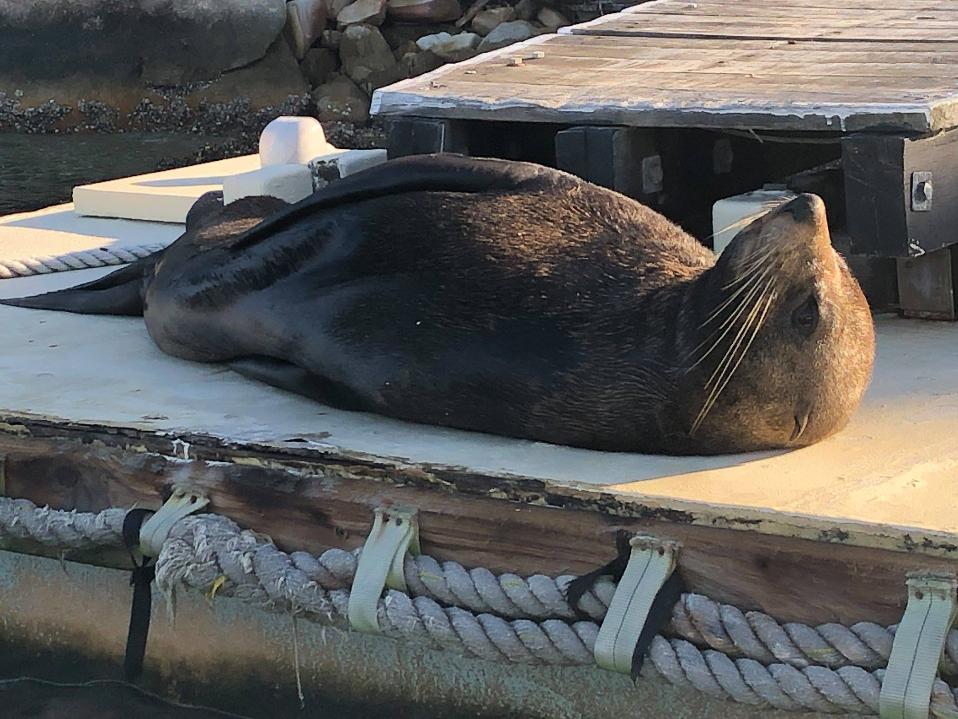
Also by John Vaughan (son of Les Vaughan, Avalon Sailing Club founding member), taken this week at Middle Harbour -
John says; "Nature at its best was evident at Middle Harbour, Sydney when I spotted this beautiful, big SEA LION which had taken possession of a local boatshed pontoon at Sugarloaf Point, Castlecrag."
John calls him/her 'Whiskers'!
Reminders that we live in an aquatic environment are everywhere - and celebrated - Stone Seal Sculpture in Dunbar Park, Avalon Beach - photo taken by A J Guesdon in March 2019
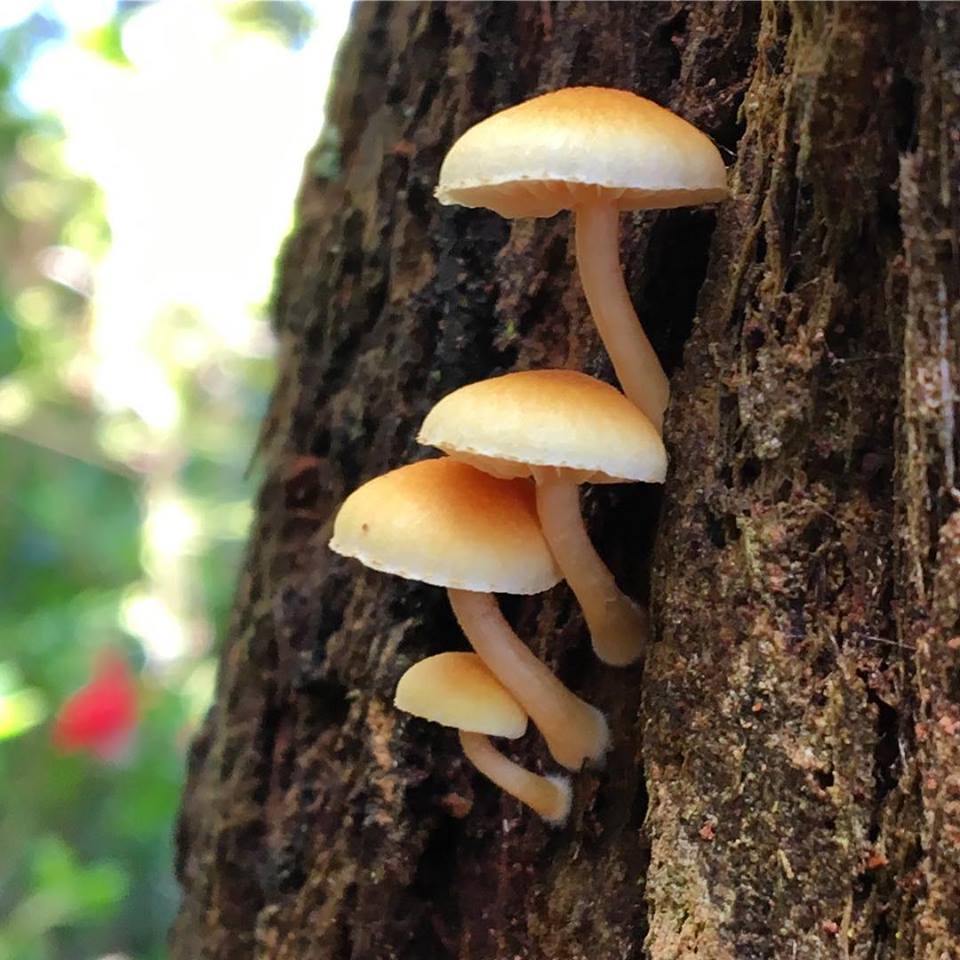
Post-Rain growth - photo by Selena Griffith, March 22nd, 2019
Stage Set For Barrenjoey High's New Performance Space
Construction contracts are set to be awarded in coming weeks for Barrenjoey High School’s new Community Performance Space, MP for Pittwater Rob Stokes said on Tuesday.
The Government has provided more than $1.2 million towards the project which has been led by the school’s P&C Association and supported by Council.
Barrenjoey High School has an outstanding reputation of producing exceptionally talented performing artists and this dedicated new space will support this to continue.
“This will provide amazing benefits for the school and the wider community,” Rob Stokes said this week.
“Barrenjoey’s P&C has done an outstanding job highlighting the opportunities this new space will provide – and we’re now only weeks away from seeing it become a reality.
“By partnering with Northern Beaches Council we can also work to ensure it becomes a genuine educational and community facility.
“Barrenjoey High School has a proud reputation as a leader in performing arts education and this type of dedicated space will support this into the future.
“This project is a great example of the school community and the government working together and I’m really looking forward to construction getting underway,” Rob Stokes said.

Construction contracts are set to be awarded in coming weeks for Barrenjoey High School’s new Community Performance Space, MP for Pittwater Rob Stokes said on Tuesday.
The Government has provided more than $1.2 million towards the project which has been led by the school’s P&C Association and supported by Council.
Barrenjoey High School has an outstanding reputation of producing exceptionally talented performing artists and this dedicated new space will support this to continue.
“This will provide amazing benefits for the school and the wider community,” Rob Stokes said this week.
“Barrenjoey’s P&C has done an outstanding job highlighting the opportunities this new space will provide – and we’re now only weeks away from seeing it become a reality.
“By partnering with Northern Beaches Council we can also work to ensure it becomes a genuine educational and community facility.
“Barrenjoey High School has a proud reputation as a leader in performing arts education and this type of dedicated space will support this into the future.
“This project is a great example of the school community and the government working together and I’m really looking forward to construction getting underway,” Rob Stokes said.

The Sky Should Be The Limit: Meet The Researcher Working Towards New Horizons For Women In Astronomy
March 22nd, 2019by Ivy ShihUNSW MediaAssociate Professor Sarah Brough wants to know how time has shaped our galaxies – and she is a gender equity champion for the next generation of astronomers.
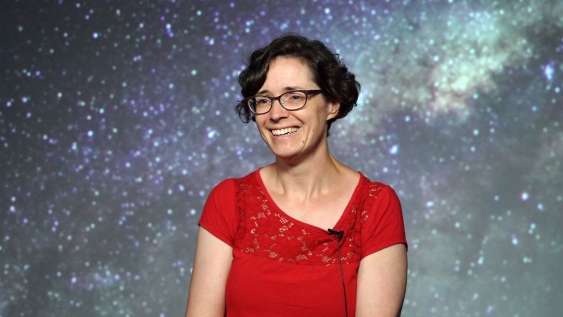
Observational Astronomer Professor Sarah Brough is taking Australian astronomy to greater heights.
As an observational astronomer, Associate Professor Sarah Brough looks to the stars for answers – but that wasn’t always crystal clear.
After completing an undergraduate degree in Physics, A/Prof Brough spent a year travelling and working, uncertain of what to do next.
It was a New Scientist article that pulled her back into the trajectory of scientific research and astronomy. The article was about an amazing new discovery, exploring how the universe was not only expanding, but swelling at an accelerating rate, an unknown force pushing it apart.
The work was jointly led by Astrophysicist Professor Brian Schmidt, who would go on to be awarded the 2011 Nobel prize for this work. He is now the Vice Chancellor at Australian National University.
This would be the catalyst to A/Prof Brough embarking onto the path to research.
“I found myself missing my identity as a scientist,” says A/Prof Brough.
“I remember just being really excited by the idea I could study really big galaxies.”
Using telescopes to time travel A/Prof Brough is particularly interested in what changes the shape of a galaxy over time. For instance, how did the Milky Way galaxy, home to our own solar system, evolve to get its distinctive beautiful spiral arms?
The pursuit of such an answer has taken A/Prof Brough to observatories around the world, as a key member of three major Australian-led surveys of galaxies. She has visited telescopes at observatories including one next to the Warrumbungle National Park in Australia and one more than two kilometres above sea level in the Canary Islands.
“It is about having those conversations more openly and having that top-down leadership.”
Telescopes are like glasses for our eyes to see the night sky – they are designed to collect different frequencies of light, making it possible for astronomers to study celestial bodies in space, such as stars and galaxies.
To A/Prof Brough, telescopes are like time machines that allow her to travel back in time to study the evolution of galaxies.
This is because of the speed at which light travels: it takes 8 minutes for the light of the Sun to reach Earth. Proxima Centauri, the closest star other than the Sun, is 4.5 light years away from Earth. Whenever we peer at Proxima Centauri through a telescope, we are looking at light of a star that began its journey to Earth 4.5 years ago.
By collecting that distant light, powerful telescopes can capture an image of what a galaxy looked like billions of years ago. It is possible to look further into deep space, and so further back in time.
But how far back in time are we talking? A/Prof Brough wants to look all the way back to the Big Bang 13.8 billion years ago. By piecing together these images of galaxies, Professor Brough can map the different stages of evolution of galaxies over time, including massive galaxies thousands of times the size of the Milky Way.
“Galaxies do change over time, and this is important because we as human beings are part of this larger picture,” she says.
“We live on Earth, which is part of the solar system which goes around the Sun. The Sun is one star out of billions in the galaxy - that’s our home.”
Leading the way for gender equity in Astronomy Equal to A/Prof Brough’s passion to unveil the scenes behind the evolution of some of our most massive galaxies is a keen drive to support the next generation of female astronomers in Australia.
Former Chair of the Astronomical Society of Australia’s Inclusion, Diversity and Equity in Astronomy Chapter, A/Prof Brough founded the first Australian Women in Astronomy workshop in 2011 to establish leadership support networks among women in the field.
“I really believe in mentoring and encouraging the younger generation, particularly women,” says A/Prof Brough.
“It is about having those conversations more openly and having that top-down leadership.”
Her dedication for a greater voice for women in astronomy resulted in Australian Astronomy Limited, a major non-profit company, deciding that their committees should consist of at least 30% women, to ensure that those women joining the committees would feel comfortable bringing their opinions.
“That was amazing, because it opens up all of those doors to give women both a voice but also opportunities to progress,” says A/Prof Brough.
In 2015, A/Prof Brough was selected to be in the Homeward Bound leadership program. The program brings together future female leaders in STEMM and empowers them with skills to impact policy and decision-making – culminating in a 3-week expedition to Antarctica in December 2016.
“It was incredibly valuable to understand more about leadership and recognise my own personal strengths and values,” says A/Prof Brough.
Leading Australian astronomy to new heights These days, A/Prof Brough is leading Australia into a new astronomical survey of the southern sky.
The Cerro Pachón ridge in north-central Chile will soon be home to a new telescope that will be able to survey the whole Southern Hemisphere sky in just three days.
When it comes to telescopes, the bigger the telescope, the more powerful it is. The 8.4-meter Large Synoptic Survey Telescope (LSST) is designed with mirrors which can be controlled so it is possible to take wide pictures of the night sky clearly. The goal is for the LSST project to take 800 separate images of each region of the night sky over 10 years.
Locked within those images are new data, opening up exciting new possibilities in astronomical research, including mapping the evolution of massive galaxies.
It’s those ‘Aha!’ moments that truly light up research for A/Prof Brough, a feeling she wants to preserve and communicate to the general public.
“It is keeping that feeling of fundamental wonderment alive,” she says.
“We as a society value that understanding and curiosity about the universe.”
A/Prof Brough joined UNSW in 2017 as part of the University’s Strategic Hires and Retention Pathways (SHARP) scheme, an initiative of the UNSW 2025 Strategy to recruit world-class researchers to the University. 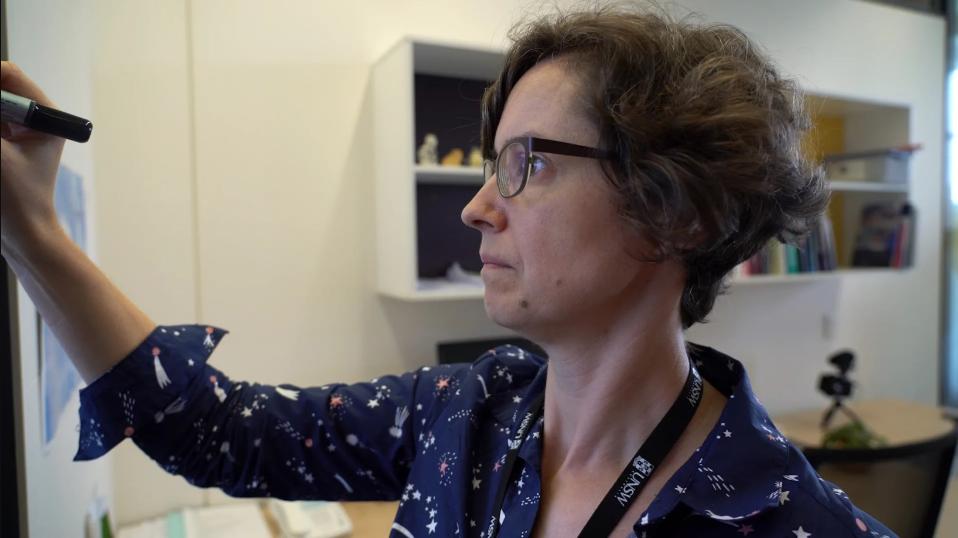 Professor Sarah Brough is driven to not only learn how massive galaxies evolve, but also support the next generation of female astronomers in Australia.
Professor Sarah Brough is driven to not only learn how massive galaxies evolve, but also support the next generation of female astronomers in Australia.
March 22nd, 2019
by Ivy Shih
UNSW Media
Associate Professor Sarah Brough wants to know how time has shaped our galaxies – and she is a gender equity champion for the next generation of astronomers.

Observational Astronomer Professor Sarah Brough is taking Australian astronomy to greater heights.
As an observational astronomer, Associate Professor Sarah Brough looks to the stars for answers – but that wasn’t always crystal clear.
After completing an undergraduate degree in Physics, A/Prof Brough spent a year travelling and working, uncertain of what to do next.
It was a New Scientist article that pulled her back into the trajectory of scientific research and astronomy. The article was about an amazing new discovery, exploring how the universe was not only expanding, but swelling at an accelerating rate, an unknown force pushing it apart.
The work was jointly led by Astrophysicist Professor Brian Schmidt, who would go on to be awarded the 2011 Nobel prize for this work. He is now the Vice Chancellor at Australian National University.
This would be the catalyst to A/Prof Brough embarking onto the path to research.
“I found myself missing my identity as a scientist,” says A/Prof Brough.
“I remember just being really excited by the idea I could study really big galaxies.”
Using telescopes to time travel
A/Prof Brough is particularly interested in what changes the shape of a galaxy over time. For instance, how did the Milky Way galaxy, home to our own solar system, evolve to get its distinctive beautiful spiral arms?
The pursuit of such an answer has taken A/Prof Brough to observatories around the world, as a key member of three major Australian-led surveys of galaxies. She has visited telescopes at observatories including one next to the Warrumbungle National Park in Australia and one more than two kilometres above sea level in the Canary Islands.
“It is about having those conversations more openly and having that top-down leadership.”
Telescopes are like glasses for our eyes to see the night sky – they are designed to collect different frequencies of light, making it possible for astronomers to study celestial bodies in space, such as stars and galaxies.
To A/Prof Brough, telescopes are like time machines that allow her to travel back in time to study the evolution of galaxies.
This is because of the speed at which light travels: it takes 8 minutes for the light of the Sun to reach Earth. Proxima Centauri, the closest star other than the Sun, is 4.5 light years away from Earth. Whenever we peer at Proxima Centauri through a telescope, we are looking at light of a star that began its journey to Earth 4.5 years ago.
By collecting that distant light, powerful telescopes can capture an image of what a galaxy looked like billions of years ago. It is possible to look further into deep space, and so further back in time.
But how far back in time are we talking? A/Prof Brough wants to look all the way back to the Big Bang 13.8 billion years ago. By piecing together these images of galaxies, Professor Brough can map the different stages of evolution of galaxies over time, including massive galaxies thousands of times the size of the Milky Way.
“Galaxies do change over time, and this is important because we as human beings are part of this larger picture,” she says.
“We live on Earth, which is part of the solar system which goes around the Sun. The Sun is one star out of billions in the galaxy - that’s our home.”
Leading the way for gender equity in Astronomy
Equal to A/Prof Brough’s passion to unveil the scenes behind the evolution of some of our most massive galaxies is a keen drive to support the next generation of female astronomers in Australia.
Former Chair of the Astronomical Society of Australia’s Inclusion, Diversity and Equity in Astronomy Chapter, A/Prof Brough founded the first Australian Women in Astronomy workshop in 2011 to establish leadership support networks among women in the field.
“I really believe in mentoring and encouraging the younger generation, particularly women,” says A/Prof Brough.
“It is about having those conversations more openly and having that top-down leadership.”
Her dedication for a greater voice for women in astronomy resulted in Australian Astronomy Limited, a major non-profit company, deciding that their committees should consist of at least 30% women, to ensure that those women joining the committees would feel comfortable bringing their opinions.
“That was amazing, because it opens up all of those doors to give women both a voice but also opportunities to progress,” says A/Prof Brough.
In 2015, A/Prof Brough was selected to be in the Homeward Bound leadership program. The program brings together future female leaders in STEMM and empowers them with skills to impact policy and decision-making – culminating in a 3-week expedition to Antarctica in December 2016.
“It was incredibly valuable to understand more about leadership and recognise my own personal strengths and values,” says A/Prof Brough.
Leading Australian astronomy to new heights
These days, A/Prof Brough is leading Australia into a new astronomical survey of the southern sky.
The Cerro Pachón ridge in north-central Chile will soon be home to a new telescope that will be able to survey the whole Southern Hemisphere sky in just three days.
When it comes to telescopes, the bigger the telescope, the more powerful it is. The 8.4-meter Large Synoptic Survey Telescope (LSST) is designed with mirrors which can be controlled so it is possible to take wide pictures of the night sky clearly. The goal is for the LSST project to take 800 separate images of each region of the night sky over 10 years.
Locked within those images are new data, opening up exciting new possibilities in astronomical research, including mapping the evolution of massive galaxies.
It’s those ‘Aha!’ moments that truly light up research for A/Prof Brough, a feeling she wants to preserve and communicate to the general public.
“It is keeping that feeling of fundamental wonderment alive,” she says.“We as a society value that understanding and curiosity about the universe.”
A/Prof Brough joined UNSW in 2017 as part of the University’s Strategic Hires and Retention Pathways (SHARP) scheme, an initiative of the UNSW 2025 Strategy to recruit world-class researchers to the University.

Professor Sarah Brough is driven to not only learn how massive galaxies evolve, but also support the next generation of female astronomers in Australia.
Anzac Day Schools' Awards 2019
The Department of Veterans’ Affairs (DVA) hosts the Anzac Day Schools’ Awards each year.This national competition encourages students and teachers to plan, deliver and report on the commemoration of Anzac Day in their local community.
We encourage schools to involve local veterans, current serving members of the Australian Defence Force and other important local people as a way for students to discover wartime experience.
Participating in a student competition helps children and teenagers to challenge themselves, test their ideas and show their talents.
It’s open to all primary and secondary schools in Australia.
Entries for 2019 are now open. Submission closes on 24 May 2019.
Find out:
Helpful resourcesPlan your school’s commemorative activities and research with the following resources.
We create educational resources linked to the Australian Curriculum, including commemorative publications and interviews with veterans.
Explore government records about Australians and New Zealanders in World War I. Enhance a profile dedicated to the wartime journey of someone who served. Uncover the personal stories of service men and women through original archival records.
Commemorating those who have served, here you will find listings of members of Australia’s defence forces who served during the Second World War, Korean War, Vietnam War and First Gulf War.
Local memorabilia and memorialsYour local war memorial, war graves, ex-service organisations and history associations can also be a useful starting point.

The Department of Veterans’ Affairs (DVA) hosts the Anzac Day Schools’ Awards each year.
This national competition encourages students and teachers to plan, deliver and report on the commemoration of Anzac Day in their local community.
We encourage schools to involve local veterans, current serving members of the Australian Defence Force and other important local people as a way for students to discover wartime experience.
Participating in a student competition helps children and teenagers to challenge themselves, test their ideas and show their talents.
It’s open to all primary and secondary schools in Australia.
Entries for 2019 are now open. Submission closes on 24 May 2019.
Find out:
Helpful resources
Plan your school’s commemorative activities and research with the following resources.
We create educational resources linked to the Australian Curriculum, including commemorative publications and interviews with veterans.
Explore government records about Australians and New Zealanders in World War I. Enhance a profile dedicated to the wartime journey of someone who served. Uncover the personal stories of service men and women through original archival records.
Commemorating those who have served, here you will find listings of members of Australia’s defence forces who served during the Second World War, Korean War, Vietnam War and First Gulf War.
Local memorabilia and memorials
Your local war memorial, war graves, ex-service organisations and history associations can also be a useful starting point.

Super Smut Fungus To Combat Smothering Weed
March 22nd, 2019: from CSIRO
Wandering trad (Tradescantia fluminensis) has become a significant environmental weed in parts of eastern Australia where it forms dense carpets on forest floors, smothering native vegetation and clogging waterways.
CSIRO senior research scientist Dr Louise Morin said weeds like wandering trad had a significant economic, environmental and social impact in Australia.
“Weeds are one of the biggest threats to Australia’s unique environment – in many areas across Australia they are damaging native vegetation, which threatens whole ecosystems including native wildlife,” Dr Morin said.
“Last year Australia spent almost $30 million protecting the natural environment from weeds. In the agriculture sector, weeds cost the industry more than $4.8 billion per year.”
“The fungus is spread through spores and needs the leaves of the wandering trad to survive – if there is no wandering trad to infect, the fungus dies,” Dr Morin said. “We know from decades of research in this field, that specialised fungi, like the leaf smut, have specific genes that enable them to successfully infect and cause disease only on single or a narrow range of plant species. “So we look at plants that are related to wandering trad including native plants to make sure the fungus will only infect the weed.” Wandering trad has infested native forests across eastern Australia, from eastern parts of NSW and south-east Queensland, to the Dandenong Ranges in Victoria where the biocontrol agent will first be released.
CSIRO field biologist Dr Ben Gooden, who is coordinating the rollout of the biocontrol program across Australia, said highly targeted and tested biocontrol agents like the fungus were a more environmentally sustainable option than other available tools.
“Scientifically tested biocontrol agents like this fungus provide a longer term, environmentally sustainable way of controlling weeds like wandering trad, without harming Australian plants or animals,” Dr Gooden said.
“Currently, the only tools available to the community and local councils against the weed are hand-pulling and chemical herbicides, which only bring short-term control and have the unintended consequence of killing native plants and disrupting complex rainforest ecosystems.”
Release of biocontrol agents are approved by the Australian Department of Agriculture and Water.
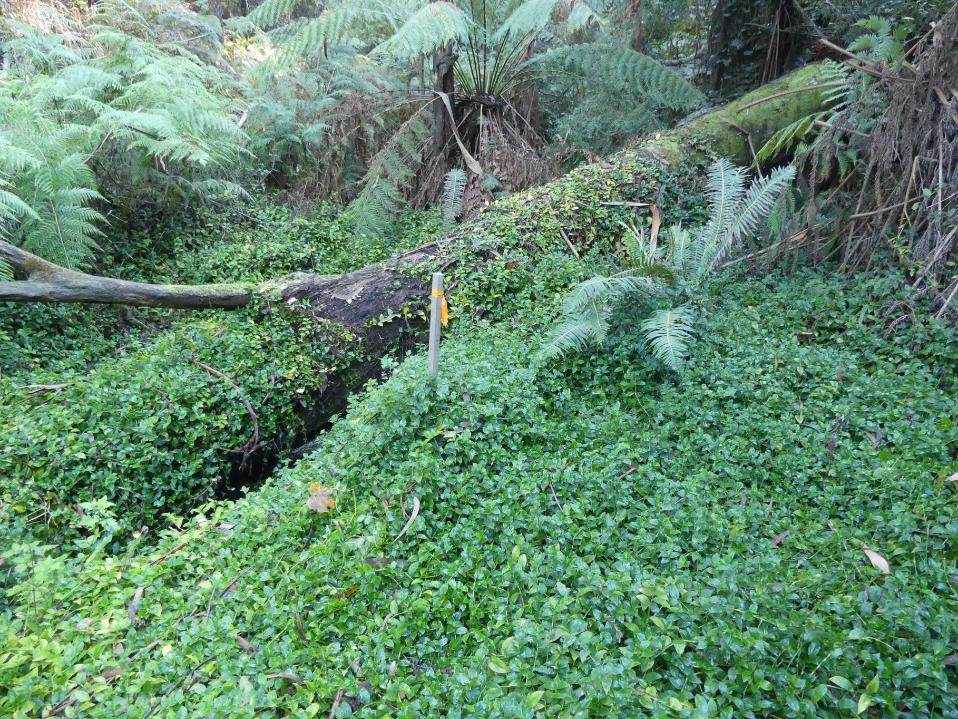
Tradescantia fluminensis - photo supplied
IPCC Is Underselling Climate Change
March 20, 2019: University of Adelaide
A new study has revealed that the language used by the global climate change watchdog, the Intergovernmental Panel on Climate Change (IPCC), is overly conservative -- and therefore the threats are much greater than the Panel's reports suggest.
Published in the journal BioScience, the team of scientists from the University of Adelaide, Flinders University, the University of Bristol (UK), and the Spanish National Research Council has analysed the language used in the IPCC's Fifth Assessment Report (from 2014).
"We found that the main message from the reports -- that our society is in climate emergency -- is lost by overstatement of uncertainty and gets confused among the gigabytes of information," says lead author Dr Salvador Herrando-Pérez, from the University of Adelaide's Environment Institute and Australian Centre for Ancient DNA.
"The IPCC supports the overwhelming scientific consensus about human impact on climate change, so we would expect the reports' vocabulary to be dominated by greater certainty on the state of climate science -- but this is not the case."
The IPCC assigns a level of certainty to climate findings using five categories of confidence and ten categories of probability. The team found the categories of intermediate certainty predominated, with those of highest certainty barely reaching 8% of the climate findings evaluated.
"The accumulation of uncertainty across all elements of the climate-change complexity means that the IPCC tends to be conservative," says co-author Professor Corey Bradshaw, Matthew Flinders Fellow in Global Ecology at Flinders University. "The certainty is in reality much higher than even the IPCC implies, and the threats are much worse."
"Uncertainty is to science what the score is to music -- but it's a two-edged sword: what the IPCC and the majority of the scientific community regard as a paradigm of rigour and transparency is exactly what the 'merchants of doubt' put forward as a weakness," says Dr Herrando-Pérez.
"However, climatic uncertainties are nothing but an expression of the climate risks we face, and should inspire action rather than indifference."
The team says the IPCC reports should incorporate a clear connection between the certainty of thousands of scientific findings and the certainty that humans are vastly altering the Earth's climate. The team recommends a new IPCC working group of communication specialists to oversee the language and effective dissemination, and convey the message accurately.
"Our evolutionary history tells us Earth will ultimately survive more aridity, more hurricanes, more floods, more sea-level rise, more extinctions and degraded ecosystems, but our society as we know it today might not unless we clearly articulate the magnitude of the threat it poses," says Dr Herrando-Pérez.
Salvador Herrando-Pérez, Corey J A Bradshaw, Stephan Lewandowsky, David R Vieites. Statistical Language Backs Conservatism in Climate-Change Assessments. BioScience, 2019; 69 (3): 209 DOI: 10.1093/biosci/biz004
Biodiversity Patterns In Antarctic Dry Valleys
March 20, 2019: Virginia Tech
Antarctica is a nearly uninhabited, ice-covered continent ravaged by cold, windy, and dry conditions. Virginia Tech researcher Jeb Barrett was part of an international collaborative team that analysed biodiversity patterns in the McMurdo Dry Valleys of Antarctica.
"Surprisingly, we found that biotic, or living, interactions are crucial in shaping biodiversity patterns even in the extreme ecosystems of the Antarctic Dry Valleys. Antarctic soils are model ecosystems, limited by the extreme climate and lack of vascular plants, and they host simple food webs with few species," said Barrett, professor in the Department of Biological Sciences in the College of Science.
These findings were recently published in two separate papers in Communications Biology. A paper on biotic interactions analyzes the entire community of soil organisms; its companion paper focuses on the soil nematode community using a modeling approach.
Characteristics of Antarctic communities, such as simple food webs and low species richness, allow for a greater understanding of the whole community, from bacteria to multi-cellular invertebrates.
This research is the product of an international collaboration of scientists from half a dozen countries: the United States, New Zealand, Canada, Australia, Great Britain, and South Africa. Organised by the University of Waikato and the New Zealand Antarctic Program, it is the first of its kind to study a soil community in its entirety at a regional scale.
Barrett has been conducting research in Antarctica for 20 years; he deployed for this research collaboration in 2009 and 2010. Research in the Barrett lab addresses the influences of soils, climate variability, hydrology, and biodiversity on biogeochemical cycling from the scale of microorganisms to regional landscapes.
"My research in the Antarctic has been focused on analysing the physical and geochemical drivers that predict biodiversity patterns. I focused initially on the nematode communities, and my work has now expanded into the bacterial communities, as well," said Barrett, an affiliated faculty member of the Global Change Center, housed within the Fralin Life Science Institute.
The Communications Biology paper on biotic interactions considers the entire community of soil organisms: cyanobacteria, heterotrophic bacteria, nematodes, and other microscopic invertebrates. The scientists studied the factors that determine the distribution and abundance of these organisms, as well as temperature, topography, distance to the coast, and soil properties, such as water and pH levels, in their analysis.
"What makes this paper truly unique is that we considered the entire community of soil organisms and all the possible biotic and abiotic interactions that potentially shape the species composition and diversity," said Barrett. "We used the statistical technique of structural equation modelling to tease out what the drivers of these communities are."
Biogeochemistry and climate have strong effects on biodiversity, but this new data demonstrated that there are two other important factors. They found that biogeography and species interactions are stronger drivers of biodiversity than originally expected. Biogeographic processes occur when an organism moves through space, interacting with its community as it moves. Species interactions, such as predator-prey relationships and competition, also influence biodiversity.
In the companion paper, the researchers used a modeling approach to study the co-occurrence and distribution of three dominant nematode species found in the soil. Nematodes, also known as roundworms, are a group of simple organisms that have successfully adapted to nearly every ecosystem on Earth. The researchers demonstrated that competition is a more important driver of diversity patterns in the nematode community than previously thought.
"We modeled three nematode species -- Plectus, Scottnema, and Eurdoylaimus -- that are potentially interacting. Our results show that it is not just environmental drivers that influence species distribution across the polar landscape but that competition and interactions are playing a large role in diversity patterns as well," said Barrett.
The future challenge for researchers is to understand how the effects of climate change on these interactions will alter species coexistence in Antarctica. They expect that with increasing temperatures, the thawing of ice will create environments that select for nematode species more adapted to warmer and wetter environments. Early indications of this have already been observed in the team's long-term monitoring studies of soil communities, as reported in the journal Ecology last year.
Barrett's ongoing research is funded by the National Science Foundation's Long Term Ecological Research (LTER) Program. His research goal with the LTER is to use a combination of manipulative experiments and long-term observations to understand how climate variability influences Antarctic organisms and ecosystems.
Journal References:
Charles K. Lee, Daniel C. Laughlin, Eric M. Bottos, Tancredi Caruso, Kurt Joy, John E. Barrett, Lars Brabyn, Uffe N. Nielsen, Byron J. Adams, Diana H. Wall, David W. Hopkins, Stephen B. Pointing, Ian R. McDonald, Don A. Cowan, Jonathan C. Banks, Glen A. Stichbury, Irfon Jones, Peyman Zawar-Reza, Marwan Katurji, Ian D. Hogg, Ashley D. Sparrow, Bryan C. Storey, T. G. Allan Green, S. Craig Cary. Biotic interactions are an unexpected yet critical control on the complexity of an abiotically driven polar ecosystem. Communications Biology, 2019; 2 (1) DOI: 10.1038/s42003-018-0274-5
Tancredi Caruso, Ian D. Hogg, Uffe N. Nielsen, Eric M. Bottos, Charles K. Lee, David W. Hopkins, S. Craig Cary, John E. Barrett, T. G. Allan Green, Bryan C. Storey, Diana H. Wall, Byron J. Adams. Nematodes in a polar desert reveal the relative role of biotic interactions in the coexistence of soil animals. Communications Biology, 2019; 2 (1) DOI: 10.1038/s42003-018-0260-y
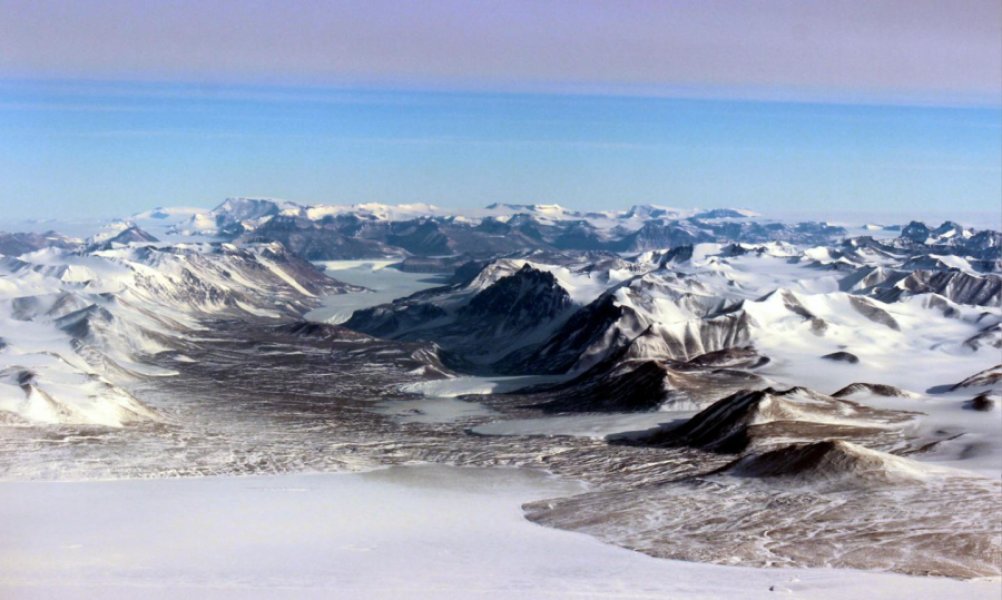
McMurdo Dry Valleys in Antarctica. Credit: McMurdo Dry Valleys LTER
PITTWATER YHA OFFERS FREE BEDS FOR GREEN HEARTS
This May, Pittwater YHA opens its doors to green-hearted and green-thumbed guests who'll save the gorgeous Ku-ring-gai Chase National Park from imminent asparagus fern invasion. Yes, seriously.
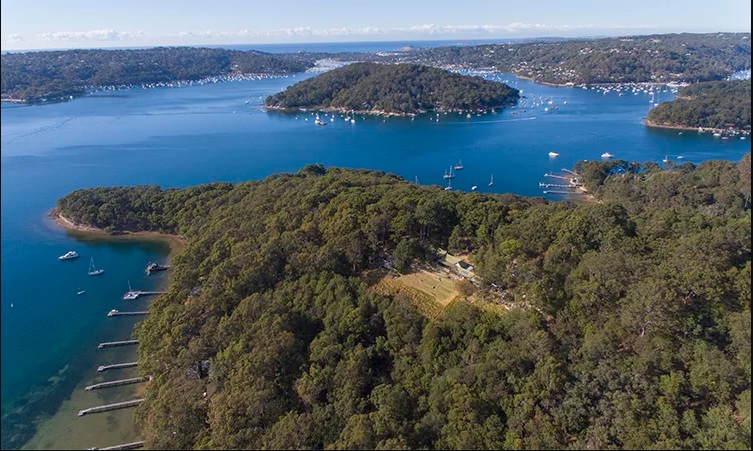
WHAT IS IT?
Bush Regeneration sees eco-conscious, kind hearted humans restore and rehabilitate the gorgeous, sprawling Aussie bush from its weed-infested, degraded state into a healthy, thriving plant community, which will prosper and delight forevermore. Far from just weed removal; Regenerators focus on habitat, drainage, weed sources and establishing native communities. These are big words which probably don’t make much sense – but we have an interactive learning opportunity for you!
WHERE IS IT?
Ku-ring-gai Chase National Park, Sydney’s protected north coast, is home to rock engravings, red ochre rock paintings, the fuzziest wildlife you ever did see and the most breathtaking views a Sydneysider or visitor could comprehend; and is currently under threat from invasive asparagus fern; which needs removing. Who knew your Aunty’s fave veggie could be so aggressive?
ALRIGHT - SIGN ME UP!
The blissed-out, babbling-brooked, spectacular-viewed, fresh-aired oasis that is our Pittwater YHA, alongside the Northern Beaches Council, are offering you fine green-thumbed and hearted folk the opportunity to volunteer alongside professional Regenerators for a weekend of Pittwater Restoration from May 3 - 5, 2019. Spend two mornings of tending to the gorgeous surrounds and you’ll be rewarded with two nights’ accommodation, two days of meals (morning teas, BBQ lunches and evening dinners) and kayak use throughout your stay. Plus, you’ll be chuffed with yourself for doing your bit for the planet and our futures.
Along with your towels, two sheets, a pillowcase and, sturdy shoes, sunscreen and your breakfasts; you’ll need a $20 contribution for the weekend. For all the T&Cs; head to Pittwater YHA, shoot them an email (Subject: 'Bush Regeneration Weekend') or give them a ring on (02 9999-5748) – the only thing those guys love more than a regenerated bushland is chatting to ladies and gentleman who are keen on the idea!
Archie's Pittwater Clean Up
My name is Archie Mandin
I am a Seabin Ambassador, I started this campaign because I want to take a stand against ocean plastics!
My goal is to raise enough money to bring a minimum of 20 Seabins to Pittwater NSW as I want to give The Northern Beaches the opportunity to reduce its plastic pollution impact on the ocean. Its amazing how much accidental rubbish comes down our creeks and into our waterways
I need your help to raise money to buy the Seabins a revolutionary ocean cleaning technology which is essentially a floating rubbish bin that operates 24/7 catching all floating debris in the water.
The Seabin helps clean the ocean of floating debris which in turn creates cleaner oceans and we all benefit from this in one way or another. I mean, who really wants to swim in pollution? Not me that’s for sure!
Did you know that 300 million tons of plastic are produced in the world every year, half of which is for single use products, from this more than 8 million tons of plastic is dumped into our oceans every year. We need to do something about it and now with the purchase of a Seabin we can all participate and make a difference!
Join me and my campaign to help ensure cleaner oceans!
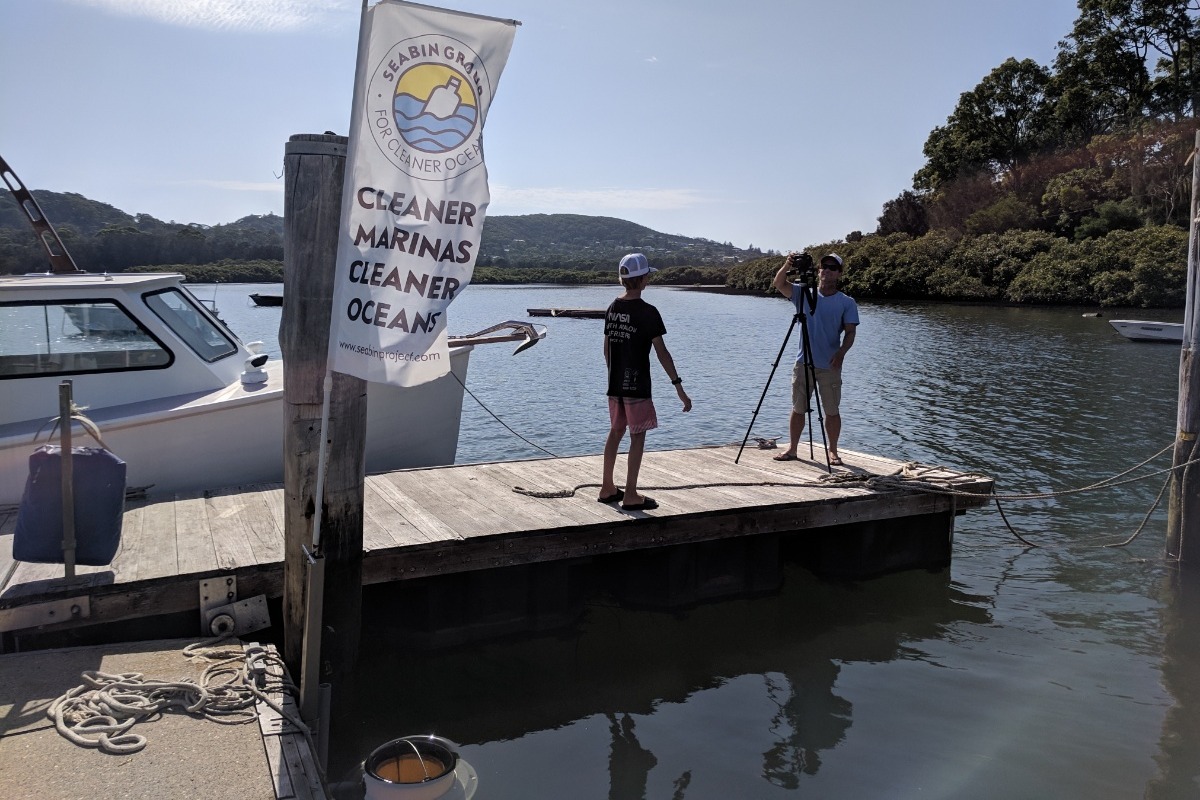
What’s a Seabin?
The Seabin is a floating rubbish bin that is located in the water at marinas, docks, yacht clubs and commercial ports.
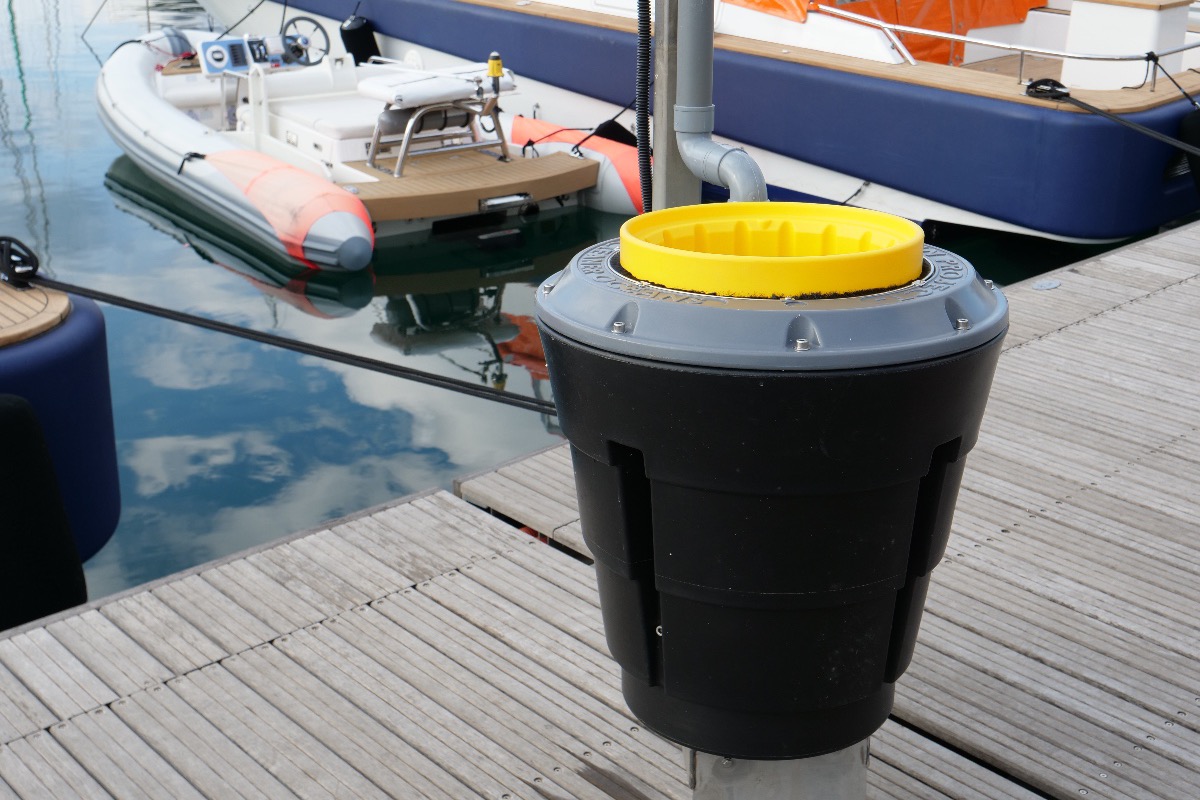
The Seabin can catch an average of 3.9kgs of floating debris per day which adds up to 1.4 tons per year. (depending on weather conditions and debris volumes) The Seabins is catching large plastic bags, bottles, plastic straws, coffee cups, food wrappers, surface oils and micro plastics down to 2 mm small.
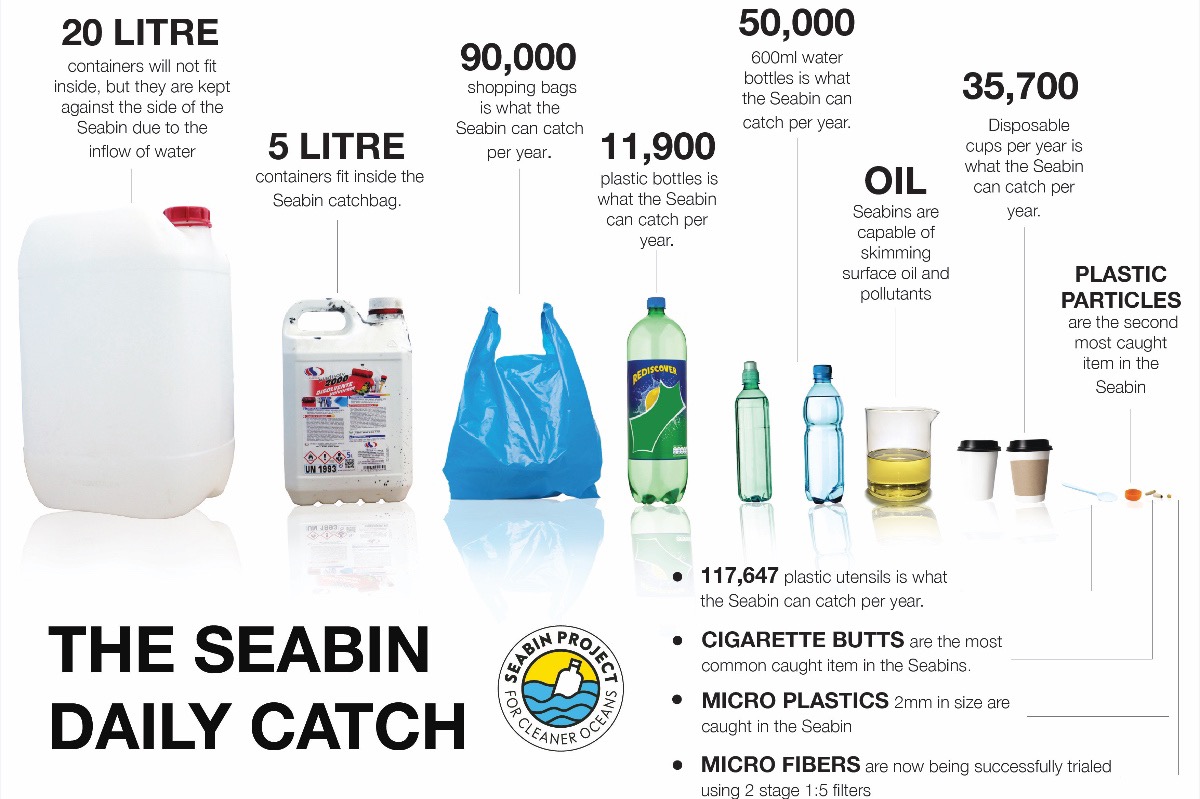
How can a Seabin contribute to cleaner oceans?
The Seabin contributes to cleaner oceans by removing 1.4 tons of floating debris per unit per year. The location of the Seabin in marinas is ideal and where it matters most, close to the source of entry for floating debris. Ports and Marinas are perfect locations to stop floating debris from entering the open ocean and ocean plastics are also brought in by wind and currents.
Are the Seabins a danger to marine life?
The fish According to the team at Seabin, stay away from the surface of the water where the Seabin sucks in the water. They are deterred by the force of the water current. If there are swarms of jellyfish or bait fish it is recommended that the Seabins are turned off until the swarms pass. If a fish was to accidentally go into the Seabin, it would be caught in the Seabin and stay submerged in water until the marina staff retrieve the filter and throw the fish still alive back into the water.
How does it work?
Water is sucked in from the surface and passes through a catch bag inside the Seabin, with a submersible water pump capable of displacing 25.000 LPH (liters per hour). The water is then pumped back into the marina leaving litter and debris trapped in the catch bag to be disposed of properly.
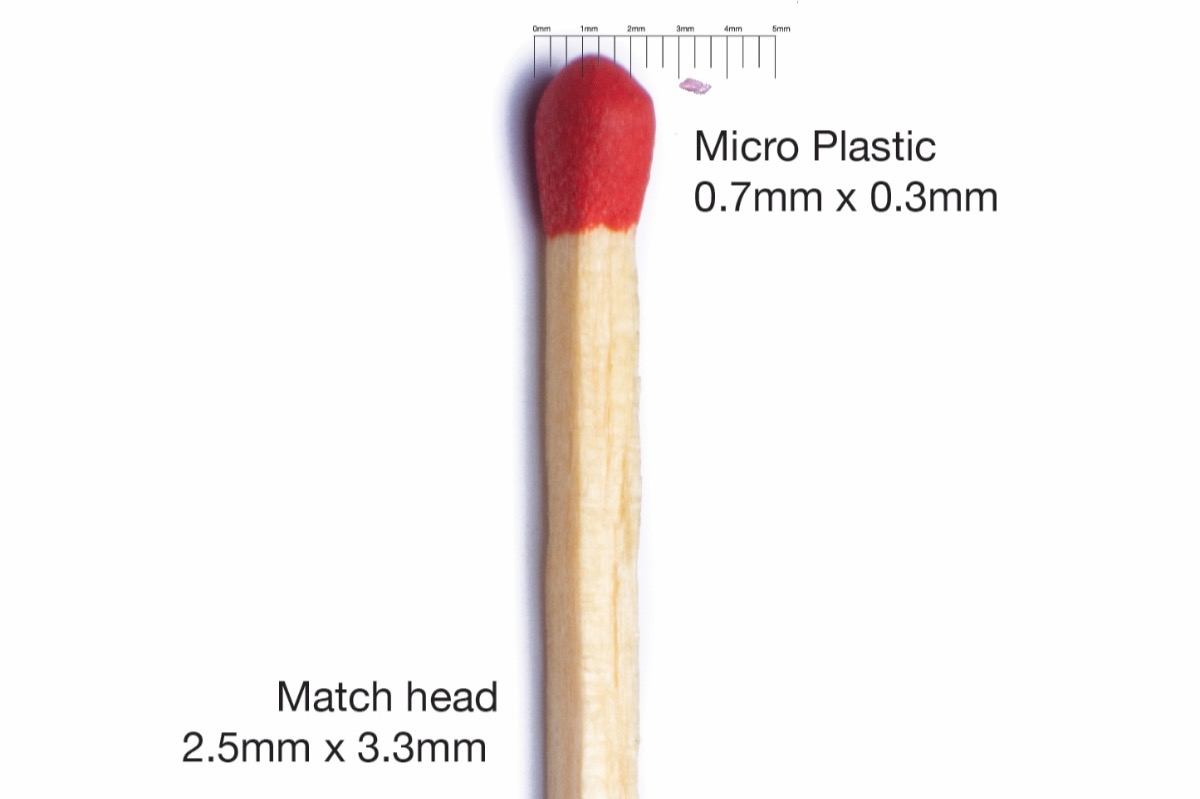
Who is responsible for the Seabin?
This is the best part of it all, the marina will be the one responsible for the upkeep of the Seabins and also they will be paying for the energy consumption of the Seabin which is around $2 - $3 a day.
The marina enjoys a cleaner marina and the rest of us and the marine life enjoy cleaner oceans with less floating debris polluting our oceans!
Seabins part of a whole solution
Seabins whole solution is Technology, Education, Science, Research and Community. The reason for this is that Technology alone is not the solution to stopping ocean plastics, education is the real solution.

Great! Can our local community be involved also?
Yes! The team at Seabin have interactive programs and lessons designed for schools, community and youth to interact with the Seabins and have over 2000 school students engaged around the world, this is something that we can do locally also with support from the team at Seabin Project.
What will we be doing if we participate in these programs?
You would be joining an international community contributing important data and feedback on ocean plastics to the Seabin central data base. Renowned scientists, universities and environmental agencies are all a part of the programs also.
The lessons range from identifying ocean plastics to data collection of what the Seabins are catching weekly. The data collection is a very easy activity and where we can all see the measurable impact of debris the Seabins are taking out of the water in all weather conditions.
It’s as simple as counting how many plastic bags, plastic particles, food wrappers and then noting it down on a spreadsheet or app. Weather conditions and location information is also entered into the data base.
How can you help our campaign and make a difference in the world?
Every contribution to this crowdfunding campaign helps, be it $1 or $50 dollars, it all adds up and bring us closer to our goal.
Even if you cannot afford a donation, please help by sharing this campaign with your friends and family on social media. The more people that know about the campaign the better!
Thanks everyone for taking the time to check out our campaign!
FOR CLEANER OCEANS!
Archie
FAQS SHEET
Seabin Project FAQs
Q: Can someone pay out the crowdfunding campaign goal?
A: Yes! We need help! The more money we can raise, the more Seabins we can buy.
Q: Why crowdfund a Seabin?
A: Until now, the Seabins were not for the everyday person to purchase because marinas ports and yacht clubs are the target market for Seabin Group. This is a way where everyday people can give something back to the oceans.
Q: How do Seabins work in tidal areas?
A: Seabins at present are designed for floating docks and pontoons. The Seabins move up and down with the tide on the floating dock.
Q. How are the pumps run?
A. The pumps are currently electric, and around $2-$3 a day to run.
Q: When are the Seabins available?
A: Depending on your countries location, Seabins will be available Feb 2019.
Q: Do any fish get sucked into the Seabins? What about smaller marine life?
A: There is a possibility of fish to enter the Seabins, however in the last 2 years of development, the Seabins have only caught a handful of small bait fish. Most of which have been thrown back into the water alive. The fish simply stay away from the flow of water entering the Seabin and with the current fine tuning of the Seabin, the risk is now minimal.
Q: I don’t have any money to donate, how can I help?
A: Don’t worry! Your amazing anyways and thanks for even contacting us. We need help to share this project around with any media we can. Social media platforms like Facebook, Instagram, Twitter, websites, bloggers. Also with newspapers, magazines, tv, radio and journalists. Also friends and family!
Australia’s Faunal Extinction Crisis
On 27 June 2018, the Senate referred the following matter to the Environment and Communications References Committee for inquiry and report by 4 December 2018:
Australia's faunal extinction crisis, including:
- the ongoing decline in the population and conservation status of Australia's nearly 500 threatened fauna species;
- the wider ecological impact of faunal extinction;
- the international and domestic obligations of the Commonwealth Government in conserving threatened fauna;
- the adequacy of Commonwealth environment laws, including but not limited to the Environment Protection and Biodiversity Conservation Act 1999, in providing sufficient protections for threatened fauna and against key threatening processes;
- the adequacy and effectiveness of protections for critical habitat for threatened fauna under the Environment Protection and Biodiversity Conservation Act 1999;
- the adequacy of the management and extent of the National Reserve System, stewardship arrangements, covenants and connectivity through wildlife corridors in conserving threatened fauna;
- the use of traditional knowledge and management for threatened species recovery and other outcomes as well as opportunities to expand the use of traditional knowledge and management for conservation;
- the adequacy of existing funding streams for implementing threatened species recovery plans and preventing threatened fauna loss in general;
- the adequacy of existing monitoring practices in relation to the threatened fauna assessment and adaptive management responses;
- the adequacy of existing assessment processes for identifying threatened fauna conservation status;
- the adequacy of existing compliance mechanisms for enforcing Commonwealth environment law; and
- any related matters.
On 26 November 2018, the Senate granted an extension of time to report until 29 May 2019.
More available at: Senate/Environment_and_Communications/Faunalextinction
More Than One In Four High School Students Have Experienced Signs Of Depression
March 20, 2019: Ivy Shih, UNSW Media More than a quarter of high school students have experienced signs of clinical depression and other psychiatric conditions, with the type of mood disorder influencing students’ risk of suicide and self-harm.
The UNSW study – published in the Journal of Nervous and Mental Disease – offers a concerning insight into the lack of mental health support adolescents are accessing, with only 20 to 25% of students with a suggested psychiatric condition saying they had sought help from a general practitioner or a mental health professional.
The anonymous survey, led by UNSW Scientia Psychiatry Professor and Black Dog Institute Founder Gordon Parker AO, asked over 1500 year 11 and 12 Sydney private school students questions relating to mood and anxiety in recent periods and over their lifetime, and collected details about their history of self-harm behaviours, thoughts of suicide and history of being bullied.
Key Points:- A survey of 1577 students found 26.8% of the students met criteria for major (clinical) depression, with 3.4% having the biological melancholic sub-set depressive condition. 1.0% met criteria for a bipolar disorder.
- Students who experienced melancholic depression and bipolar disorder had the highest rates of self harm and ideas of suicide.
- Only 20-25% of students had consulted a general practitioner or a mental health professional.
- Of the 69 students with melancholia or a bipolar disorder, 52 were currently suicidal but had never had a psychiatric consultation.
- Professor Parker says the study was conducted in response to community concerns about a number of upper North Shore students committing suicide in previous years.
“There is predictably considerable concern about the risk of suicide in adolescents,” Professor Parker says.
“Based on the survey answers, we wanted to assess whether there were certain psychiatric conditions that put students at an increased risk of suicide and self-harm.”
The anonymous survey was carried out with the consent of parents, school counsellors and principals. Questions were based on a set of guidelines used by psychiatrists and mental health professionals for psychiatric diagnoses, including detailed criteria for major depressive disorder, social anxiety, panic attacks and post-traumatic stress disorder, while eating disorders were also assessed.
“We quantified that 26.8% of students met the criteria for major (clinical) depression, 21.5% for social anxiety disorders, and 1.0% for a bipolar disorder,” Professor Parker says.
“We also found that thoughts of suicide and previous self-harm were distinctly highest in those with a melancholic depression or bipolar disorder, in comparison to students with the other disorders or no condition at all.”
Among students who had experienced major (clinical) depression, 29% had a history of self-harm and 59% had felt suicidal over their lifetime, and of those with a melancholic depression, 50% had self-harmed and 60% had felt suicidal. Among students with responses that fit the diagnosis of bipolar disorder, 57% had self-harmed and 90% had felt suicidal.
The survey also found that there was a higher rate of suicide and self-harm history in female students: 6.5% of the boys and 19.1% of the girls had self-harmed or taken an overdose of medication, while 26.5% of male students and 33.8% of female students had thought of suicide over their lifetime.
“The study also highlights the grave extent to which bullying occurs and the effects of such vicious personal attacks on vulnerable young people experiencing depression,” Professor Parker says.
17.8% of the boys and 8.5% of girls had experienced bullying about their depression, with higher rates in those with a melancholic depression or a bipolar disorder.
Definitions:Major Depressive DisorderA major depressive disorder is a depressed mood or loss of interest or pleasure in usual activities together with four or more symptoms which include significant weight loss or gain, reduced ability to concentrate and, indecisiveness, insomnia or hypersomnia. It is the most common type of depression in Australia.
Major Depressive Disorder with MelancholiaThis type of depression is usually severe. It is marked by a loss of pleasure in almost all activities, inability to enjoy once pleasurable things, a lack of energy and impaired concentration.
Bipolar DisorderBipolar disorder is a mood disorder marked swings in mood and energy, with ‘highs’ oscillating with periods of depression.
Source: UNSW & Black Dog Institute
Professor Parker says the study established that the majority of at-risk high school students with such treatable conditions have not sought help. Of the 69 students with either melancholic depression or a bipolar disorder, 52 were currently suicidal but had never had a psychiatric consultation.
“They are therefore unlikely to be aware of their condition and its treatability, and remain at severe risk,” he says.
In Australia, a 2017 report, independent of this study, identified suicide as the leading cause of death for 15- to 17-year-olds in 2015 in NSW.
In light of the findings, the authors call for greater awareness of such high-risk conditions in schools.
“Both melancholia and bipolar disorder are conditions that can be brought under control with treatment. We need to ensure that at-risk students are assessed by sophisticated mental health practitioners, so that management strategies can be implemented to bring their mood disorders under control and avert any suicidal risk,” Professor Parker concludes.
If you are experiencing distress and need support, you can contact:
For Youth:- Kids Helpline: 1800 551 800
- Headspace: 1800 650 890
- ReachOut: au.reachout.com
For Adults:- Lifeline: 13 11 14
- Beyond Blue:1300 22 46 36.
- Suicide Callback Service: 1300 659 467
- MensLine Australia: 1300 789 978
March 20, 2019: Ivy Shih, UNSW Media
More than a quarter of high school students have experienced signs of clinical depression and other psychiatric conditions, with the type of mood disorder influencing students’ risk of suicide and self-harm.
The UNSW study – published in the Journal of Nervous and Mental Disease – offers a concerning insight into the lack of mental health support adolescents are accessing, with only 20 to 25% of students with a suggested psychiatric condition saying they had sought help from a general practitioner or a mental health professional.
The anonymous survey, led by UNSW Scientia Psychiatry Professor and Black Dog Institute Founder Gordon Parker AO, asked over 1500 year 11 and 12 Sydney private school students questions relating to mood and anxiety in recent periods and over their lifetime, and collected details about their history of self-harm behaviours, thoughts of suicide and history of being bullied.
Key Points:
- A survey of 1577 students found 26.8% of the students met criteria for major (clinical) depression, with 3.4% having the biological melancholic sub-set depressive condition. 1.0% met criteria for a bipolar disorder.
- Students who experienced melancholic depression and bipolar disorder had the highest rates of self harm and ideas of suicide.
- Only 20-25% of students had consulted a general practitioner or a mental health professional.
- Of the 69 students with melancholia or a bipolar disorder, 52 were currently suicidal but had never had a psychiatric consultation.
- Professor Parker says the study was conducted in response to community concerns about a number of upper North Shore students committing suicide in previous years.
“There is predictably considerable concern about the risk of suicide in adolescents,” Professor Parker says.
“Based on the survey answers, we wanted to assess whether there were certain psychiatric conditions that put students at an increased risk of suicide and self-harm.”
The anonymous survey was carried out with the consent of parents, school counsellors and principals. Questions were based on a set of guidelines used by psychiatrists and mental health professionals for psychiatric diagnoses, including detailed criteria for major depressive disorder, social anxiety, panic attacks and post-traumatic stress disorder, while eating disorders were also assessed.
“We quantified that 26.8% of students met the criteria for major (clinical) depression, 21.5% for social anxiety disorders, and 1.0% for a bipolar disorder,” Professor Parker says.
“We also found that thoughts of suicide and previous self-harm were distinctly highest in those with a melancholic depression or bipolar disorder, in comparison to students with the other disorders or no condition at all.”
Among students who had experienced major (clinical) depression, 29% had a history of self-harm and 59% had felt suicidal over their lifetime, and of those with a melancholic depression, 50% had self-harmed and 60% had felt suicidal. Among students with responses that fit the diagnosis of bipolar disorder, 57% had self-harmed and 90% had felt suicidal.
The survey also found that there was a higher rate of suicide and self-harm history in female students: 6.5% of the boys and 19.1% of the girls had self-harmed or taken an overdose of medication, while 26.5% of male students and 33.8% of female students had thought of suicide over their lifetime.
“The study also highlights the grave extent to which bullying occurs and the effects of such vicious personal attacks on vulnerable young people experiencing depression,” Professor Parker says.
17.8% of the boys and 8.5% of girls had experienced bullying about their depression, with higher rates in those with a melancholic depression or a bipolar disorder.
Definitions:
Major Depressive Disorder
A major depressive disorder is a depressed mood or loss of interest or pleasure in usual activities together with four or more symptoms which include significant weight loss or gain, reduced ability to concentrate and, indecisiveness, insomnia or hypersomnia. It is the most common type of depression in Australia.
Major Depressive Disorder with Melancholia
This type of depression is usually severe. It is marked by a loss of pleasure in almost all activities, inability to enjoy once pleasurable things, a lack of energy and impaired concentration.
Bipolar Disorder
Bipolar disorder is a mood disorder marked swings in mood and energy, with ‘highs’ oscillating with periods of depression.
Source: UNSW & Black Dog Institute
Professor Parker says the study established that the majority of at-risk high school students with such treatable conditions have not sought help. Of the 69 students with either melancholic depression or a bipolar disorder, 52 were currently suicidal but had never had a psychiatric consultation.
“They are therefore unlikely to be aware of their condition and its treatability, and remain at severe risk,” he says.
In Australia, a 2017 report, independent of this study, identified suicide as the leading cause of death for 15- to 17-year-olds in 2015 in NSW.
In light of the findings, the authors call for greater awareness of such high-risk conditions in schools.
“Both melancholia and bipolar disorder are conditions that can be brought under control with treatment. We need to ensure that at-risk students are assessed by sophisticated mental health practitioners, so that management strategies can be implemented to bring their mood disorders under control and avert any suicidal risk,” Professor Parker concludes.
If you are experiencing distress and need support, you can contact:
For Youth:
- Kids Helpline: 1800 551 800
- Headspace: 1800 650 890
- ReachOut: au.reachout.com
For Adults:
- Lifeline: 13 11 14
- Beyond Blue:1300 22 46 36.
- Suicide Callback Service: 1300 659 467
- MensLine Australia: 1300 789 978
Eating Fish May Help Prevent Asthma
March 19, 2019: James Cook UniversityA scientist from James Cook University in Australia says an innovative study has revealed new evidence that eating fish can help prevent asthma.
Professor Andreas Lopata from JCU's Australian Institute of Tropical Health and Medicine, (AITHM) took part in the study which tested 642 people who worked in a fish processing factory in a small village in South Africa.
"Around 334 million people worldwide have asthma, and about a quarter of a million people die from it every year. In Australia, one in nine have asthma (about 2.7 million), and among Indigenous Australians this rate is almost twice as high.
"Asthma incidence has nearly doubled in the past 30 years and about half of asthma patients do not get any benefit from the drugs available to treat it. So there's a growing interest in non-drug treatment options," he said.
Professor Lopata said the current theory is that the dramatic change in diet worldwide is behind the rise of the disease.
"There is an increasing consumption of what is known as the n-6 Polyunsaturated Fatty Acid (PUFA) found in vegetable oils and a decline in consumption of n-3 PUFA, which is mainly found in marine oils.
Crudely, there has been a global move from fresh fish to fast food," he said.
Professor Lopata said the fishing village was chosen for the testing because it had a population with high fish consumption and low socioeconomic status, so it would be likely that marine oils from fish and other seafood would be the main source of n-3, rather than supplements.
"We found that certain types of n-3 (from marine oils) were significantly associated with a decreased risk of having asthma or asthma-like symptoms by up to 62%, while high n-6 consumption (from vegetable oils) was associated with an increased risk by up to 67%," he said.
He said it was more evidence of the suspected inflammatory role of n-6 in the development of asthma, and more evidence that n-3 gave significant protection.
"Even if you factor in contaminants such as mercury found in some fish populations, the benefits of fish and seafood intake far more outweighs the potential risks," said Professor Lopata.
He said further work needed to be done on what effect specific types of n-3 have and how their beneficial role could be optimised, and on minimising the negative effects of n-6.
Shahieda Adams, Andreas Lopata, Cornelius Smuts, Roslynn Baatjies, Mohamed Jeebhay. Relationship between Serum Omega-3 Fatty Acid and Asthma Endpoints. International Journal of Environmental Research and Public Health, 2018; 16 (1): 43 DOI: 10.3390/ijerph16010043
March 19, 2019: James Cook University
A scientist from James Cook University in Australia says an innovative study has revealed new evidence that eating fish can help prevent asthma.
Professor Andreas Lopata from JCU's Australian Institute of Tropical Health and Medicine, (AITHM) took part in the study which tested 642 people who worked in a fish processing factory in a small village in South Africa.
"Around 334 million people worldwide have asthma, and about a quarter of a million people die from it every year. In Australia, one in nine have asthma (about 2.7 million), and among Indigenous Australians this rate is almost twice as high.
"Asthma incidence has nearly doubled in the past 30 years and about half of asthma patients do not get any benefit from the drugs available to treat it. So there's a growing interest in non-drug treatment options," he said.
Professor Lopata said the current theory is that the dramatic change in diet worldwide is behind the rise of the disease.
"There is an increasing consumption of what is known as the n-6 Polyunsaturated Fatty Acid (PUFA) found in vegetable oils and a decline in consumption of n-3 PUFA, which is mainly found in marine oils.
Crudely, there has been a global move from fresh fish to fast food," he said.
Professor Lopata said the fishing village was chosen for the testing because it had a population with high fish consumption and low socioeconomic status, so it would be likely that marine oils from fish and other seafood would be the main source of n-3, rather than supplements.
"We found that certain types of n-3 (from marine oils) were significantly associated with a decreased risk of having asthma or asthma-like symptoms by up to 62%, while high n-6 consumption (from vegetable oils) was associated with an increased risk by up to 67%," he said.
He said it was more evidence of the suspected inflammatory role of n-6 in the development of asthma, and more evidence that n-3 gave significant protection.
"Even if you factor in contaminants such as mercury found in some fish populations, the benefits of fish and seafood intake far more outweighs the potential risks," said Professor Lopata.
He said further work needed to be done on what effect specific types of n-3 have and how their beneficial role could be optimised, and on minimising the negative effects of n-6.
Shahieda Adams, Andreas Lopata, Cornelius Smuts, Roslynn Baatjies, Mohamed Jeebhay. Relationship between Serum Omega-3 Fatty Acid and Asthma Endpoints. International Journal of Environmental Research and Public Health, 2018; 16 (1): 43 DOI: 10.3390/ijerph16010043
Tiny Song Bird Makes Record Migration
March 19, 2019: University of GuelphFor the first time, University of Guelph biologists have tracked an annual migration of up to 20,000 kilometres made by the 12-gram blackpoll warbler, one of the fastest declining songbirds in North America.
The bird's trek between its breeding grounds in the central and western boreal forest of North America and its winter home in the Amazon Basin -- one of the longest songbird migrations recorded -- is the topic of a new paper by a research team headed by U of G biologist Ryan Norris.
The paper was published today in the journal Ecology.
Describing a "great circle route" arcing across North America and including a transoceanic flight to South America, the study confirms an epic migration journey that scientists had long suspected but not yet proved.
In 2015, Norris and other biologists were the first to show that blackpolls breeding in the Maritimes and New England complete a non-stop transoceanic flight of up to three days and about 2,700 km along the eastern coast of the United States.
For this new study, they looked at the full migration of birds from central and western breeding populations.
"It's amazing," said Norris, who worked on the study with Hilary Cooke, associate conservation scientist with Wildlife Conservation Society Canada. "A bird weighing a couple of loonies travels from the western edge of North America all the way to the Amazon basin -- and, in between, traverses the Atlantic Ocean."
Other co-authors were integrative biology professor Amy Newman and U of G grad students Bradley Woodworth, Nikole Freeman and Alex Sutton, as well as researchers from other universities, conservation groups and national parks in Canada, the U.S. and Australia.
For the study, researchers tracked birds outfitted with tiny geolocators from four boreal forest sites across northern Canada and Alaska.
Total southward migration took about 60 days on average over distances ranging from 6,900 km for birds breeding in Churchill, Manitoba, to 10,700 km for populations on the western edge of the continent in Nome, Alaska.
Blackpolls from Nome took 18 days to fly across North America to the Atlantic coast of the Carolinas. There, the birds spent almost a month fattening up to double their body weight before a non-stop, 2 ½-day flight across open water to overwintering grounds in northern Colombia, Venezuela and Brazil.
They covered between 2,250 and 3,400 km for that transoceanic hop.
Norris said scientists had long believed that blackpolls followed the great circle route. Few of the birds have ever been found in the central or western States during fall migration.
He said population numbers have fallen in recent years, perhaps caused by habitat loss and declines in insect prey related to climate change.
"To understand what's causing the decline, we need to know their full annual cycle," he said.
In their paper, the researchers say climate change may make extreme coastal weather events more frequent and more extreme, with unknown impacts on long-distance migratory birds.
"As a conservation scientist, what strikes me most is that in a single year a blackpoll warbler has to navigate 20,000 kilometres across land and ocean, facing risks of cat predation, storms and collisions with buildings and vehicles, all while trying to find islands of habitat to rest and refuel in our human-dominated landscapes,"said Cooke. "In comparison, the boreal region of northern Canada provides safe and high-quality breeding habitat for this declining species. Protecting Canada's boreal forest is critical to saving this amazing songbird."
Norris is now working with biologists in Colombia looking at the overwintering portion of the warblers' life cycle. He said learning whether populations from across the boreal forest overwinter separately or together in South American rainforests may help improve habitat management along the migration route.
William V. DeLuca, Bradley K. Woodworth, Stuart A. Mackenzie, Amy E. M. Newman, Hilary A. Cooke, Laura M. Phillips, Nikole E. Freeman, Alex O. Sutton, Lila Tauzer, Carol McIntyre, Iain J. Stenhouse, Scott Weidensaul, Philip D. Taylor, D. Ryan Norris. A boreal songbird's 20,000 km migration across North America and the Atlantic Ocean. Ecology, 2019 DOI: 10.1002/ecy.2651
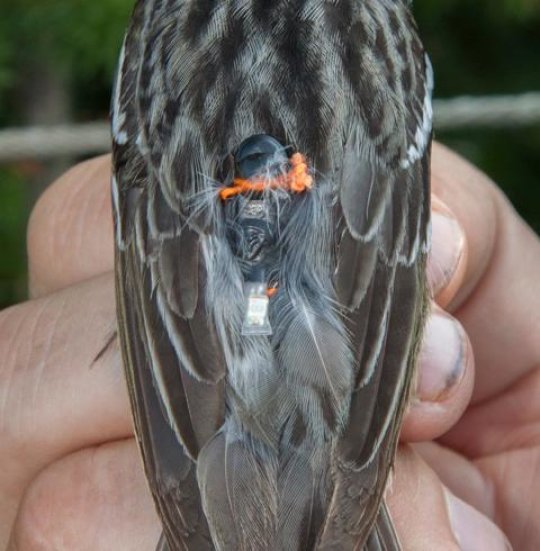
Blackpoll warbler wearing tiny 'backpack.' Credit: Vermont Centres for EcoStudies
March 19, 2019: University of Guelph
For the first time, University of Guelph biologists have tracked an annual migration of up to 20,000 kilometres made by the 12-gram blackpoll warbler, one of the fastest declining songbirds in North America.
The bird's trek between its breeding grounds in the central and western boreal forest of North America and its winter home in the Amazon Basin -- one of the longest songbird migrations recorded -- is the topic of a new paper by a research team headed by U of G biologist Ryan Norris.
The paper was published today in the journal Ecology.
Describing a "great circle route" arcing across North America and including a transoceanic flight to South America, the study confirms an epic migration journey that scientists had long suspected but not yet proved.
In 2015, Norris and other biologists were the first to show that blackpolls breeding in the Maritimes and New England complete a non-stop transoceanic flight of up to three days and about 2,700 km along the eastern coast of the United States.
For this new study, they looked at the full migration of birds from central and western breeding populations.
"It's amazing," said Norris, who worked on the study with Hilary Cooke, associate conservation scientist with Wildlife Conservation Society Canada. "A bird weighing a couple of loonies travels from the western edge of North America all the way to the Amazon basin -- and, in between, traverses the Atlantic Ocean."
Other co-authors were integrative biology professor Amy Newman and U of G grad students Bradley Woodworth, Nikole Freeman and Alex Sutton, as well as researchers from other universities, conservation groups and national parks in Canada, the U.S. and Australia.
For the study, researchers tracked birds outfitted with tiny geolocators from four boreal forest sites across northern Canada and Alaska.
Total southward migration took about 60 days on average over distances ranging from 6,900 km for birds breeding in Churchill, Manitoba, to 10,700 km for populations on the western edge of the continent in Nome, Alaska.
Blackpolls from Nome took 18 days to fly across North America to the Atlantic coast of the Carolinas. There, the birds spent almost a month fattening up to double their body weight before a non-stop, 2 ½-day flight across open water to overwintering grounds in northern Colombia, Venezuela and Brazil.
They covered between 2,250 and 3,400 km for that transoceanic hop.
Norris said scientists had long believed that blackpolls followed the great circle route. Few of the birds have ever been found in the central or western States during fall migration.
He said population numbers have fallen in recent years, perhaps caused by habitat loss and declines in insect prey related to climate change.
"To understand what's causing the decline, we need to know their full annual cycle," he said.
In their paper, the researchers say climate change may make extreme coastal weather events more frequent and more extreme, with unknown impacts on long-distance migratory birds.
"As a conservation scientist, what strikes me most is that in a single year a blackpoll warbler has to navigate 20,000 kilometres across land and ocean, facing risks of cat predation, storms and collisions with buildings and vehicles, all while trying to find islands of habitat to rest and refuel in our human-dominated landscapes,"said Cooke. "In comparison, the boreal region of northern Canada provides safe and high-quality breeding habitat for this declining species. Protecting Canada's boreal forest is critical to saving this amazing songbird."
Norris is now working with biologists in Colombia looking at the overwintering portion of the warblers' life cycle. He said learning whether populations from across the boreal forest overwinter separately or together in South American rainforests may help improve habitat management along the migration route.
William V. DeLuca, Bradley K. Woodworth, Stuart A. Mackenzie, Amy E. M. Newman, Hilary A. Cooke, Laura M. Phillips, Nikole E. Freeman, Alex O. Sutton, Lila Tauzer, Carol McIntyre, Iain J. Stenhouse, Scott Weidensaul, Philip D. Taylor, D. Ryan Norris. A boreal songbird's 20,000 km migration across North America and the Atlantic Ocean. Ecology, 2019 DOI: 10.1002/ecy.2651

Blackpoll warbler wearing tiny 'backpack.' Credit: Vermont Centres for EcoStudies
Website Puts Fears About Depression Genes Into Perspective
March 21, 2019: Lachlan Gilbert, UNSW Media
A new interactive website launched by UNSW mental health researchers allows people with a family history of major depressive or bipolar disorder to work out how likely it is that they – or any of their offspring – could develop these mental illnesses.
And according to the research article published in BMC Psychiatrywhich reported on the trial of this website with 202 participants, this new psychoeducational tool fills a gap in knowledge that is unmet by existing online interventions.
After setting up a free account on the website at links.neura.edu (titled Links: Understanding depression in the family), users begin with a short anonymous questionnaireabout the individual’s and immediate family members’ history in experiencing episodes of major depressive disorder (MDD) or bipolar disorder (BD).
The user is then taken on an educational journey about the types of depression, the degree to which genetics and environmental factors play a part, the likelihood of experiencing MDD or BD if there is a family history, as well as prevention and coping strategies.
Lead author of the study Professor Bettina Meiser says the website was developed by UNSW, Neuroscience Research Australia (NeuRA) and collaborators at other universities to address a gap in treatment that is currently not available to people concerned about their own or family members’ vulnerability to depression.
“There aren’t really any specialised genetic counsellors who cover psychiatric illnesses in Australia,” she says.
“The vast majority of genetic counsellors do prenatal genetic counselling or cancer genetic counselling. So we identified a gap and for that reason we set up this website to cater for what we believe is a sizeable group of people.”
Evaluation tool
Part of the user’s education involves using a tool that estimates how likely he or she could develop MDD or BD if these have been experienced by close blood relatives (parents, siblings or children).
Professor Meiser, who is also head of UNSW’s Psychosocial Research Group, says people may be relieved to find out that the chances of developing MDD or BD is not as high as people typically think if there is already a history of it in the family.
“The good news is that while there is certainly a genetic component to both MDD and BD, the chances of a child developing the same condition as their parents is considerably lower than fifty-fifty,” she says.
For example, a person with two or more close blood relatives who have bipolar disorder has an 18% chance of developing the condition themselves in their lifetime or 12% in the next year. This compares with 1% when looking at the Australian population as a whole for both timeframes.
“Our study showed that many people with a family history of MDD or BD greatly overestimate the risk of passing on this condition to their children,” Professor Meiser says.
“We found that the Links website improved participants’ accuracy at estimating the future risk of bipolar disorder. So this is clearly a resource that can allay fears around this, and we believe it may also lead to decreased self-stigmatisation about having the condition.”
Environmental factors
While assessing genetic risk is an important component of an understanding of depressive disorders, the Links website resource shows that environmental factors are critical in determining whether or not a person develops MDD or BD.
“All of us have a fixed predisposition to depressive disorders that our experience in the world adds to which can make us more vulnerable to depression – things like relationships, work, stress, socioeconomic backgrounds, our social networks and health,” Professor Meiser says.
To illustrate this point, the Links website uses an analogy it calls the ‘mental illness jar model’. This model says that everyone is born with a fixed number of genetic factors in their jar, which will not change over their lifetime. The space left in the jar represents someone’s vulnerability to MDD or BP. Once the jar is filled up by environmental factors added over time, a period of depression can occur.
“So someone who has more genetic factors in their jar may take fewer environmental factors to become full,” says Professor Meiser.
“But it is possible to have all these genetic factors and still not develop MDD or BP due to resilience and good prevention strategies.”
The Links website lists a number of tested prevention strategies, with the most effective listed as psychological strategies (including therapy and mind exercises), regular physical exercise and adequate amounts of sleep.
Interestingly, seeing a mental health practitioner is recommended as a pre-emptive strategy for people with a family history of MDD or BD, even if they are showing no symptoms of the illness.
“Our study showed that the Links website increased users’ intention to adopt psychological therapy as a preventative measure against depression,” Professor Meiser says.
“In fact, the increase in the proportion of individuals who intended to undergo or had undergone psychological therapy from before and after undertaking the online educational course was 22%.”
Professor Meiser says that more than 5000 people have registered for the website already and the researchers plan to promote the website further through mental health and GP organisations.
Zika Study May 'Supercharge' Vaccine Research
March 18, 2019: University of Queensland
Scientists looking at the genetics of Zika virus have found a way to fast-track research which could lead to new vaccines.
The study, led by The University of Queensland and QIMR Berghofer Medical Research Institute, used a new technique to uncover Zika mutations that help foster virus replication in mosquito hosts, while hindering its ability to replicate in mammals.
Dr Yin Xiang Setoh from UQ's School of Chemistry and Molecular Biosciences said the technique would supercharge research on Zika -- which can cause birth defects -- and other similar viruses.
"Viruses like Zika have adapted to grow in two contrasting systems -- vertebrates, like us, and invertebrates, like mosquitoes," he said.
"We used deep mutational scanning to survey all of the possible amino acid mutations in what's known as the envelope protein of the virus, which is responsible for how it binds with, enters and exits host cells.
"We found two mutations that resulted in a virus that grew well in mosquito cells, but very poorly in mammalian cells, revealing the amino acids that are critical for Zika virus to survive in mammals."
Professor Andreas Suhrbier, who heads QIMR Berghofer's Inflammation Biology laboratory, said the new technique allowed scientists to perform evolutionary virus selection in a matter of days -- a process that would take tens or hundreds of years in nature.
"This technique, used in conjunction with modelling, gives us an insight into why evolution has chosen a particular path," he said.
"We're lifting the curtain on evolutionary processes and speeding up natural processes like never before."
Lead researcher, Associate Professor Alexander Khromykh, who heads RNA Virology laboratory at UQ, said the fast-tracking of virus research was an exciting development.
"Using this rapid technique, we can now investigate how Zika virus can reach the placenta and cross into the fetus, and to isolate the viral genetic factors responsible," he said.
"This could help provide crucial knowledge for developing an effective Zika vaccine.
"Indeed, Zika virus that was engineered to contain the identified two mutations showed great potential as a vaccine.
"At the same time, we might be able to identify the genetic factors behind virus replication and transmission by mosquitoes, helping us understand how Zika is transmitted in nature."
"This technique can also be applied to investigate the development of the disease and the transmission of a range of similar viruses, transmitted by mosquitoes, ticks and other invertebrates."
"It took us a number of years, not to mention a significant collaborative effort, to get to this stage and we're incredibly excited to see what's next."
The study was initiated with seed funding from the Australian Infectious Diseases Research Centre.
Yin Xiang Setoh, Alberto A. Amarilla, Nias Y. G. Peng, Rebecca E. Griffiths, Julio Carrera, Morgan E. Freney, Eri Nakayama, Shinya Ogawa, Daniel Watterson, Naphak Modhiran, Faith Elizabeth Nanyonga, Francisco J. Torres, Andrii Slonchak, Parthiban Periasamy, Natalie A. Prow, Bing Tang, Jessica Harrison, Jody Hobson-Peters, Thom Cuddihy, Justin Cooper-White, Roy A. Hall, Paul R. Young, Jason M. Mackenzie, Ernst Wolvetang, Jesse D. Bloom, Andreas Suhrbier & Alexander A. Khromykh. Determinants of Zika virus host tropism uncovered by deep mutational scanning. Nature Microbiology, 2019 DOI: 10.1038/s41564-019-0399-4
Hepatitis B Virus Sheds Light On Ancient Human Population Movements Into Australia
March 18, 2019: University of Melbourne
Australian researchers have used current hepatitis B virus (HBV) genome sequences to deduce ancient human population movements into Australia, adding weight to the theory that the mainland Aboriginal population separated from other early humans at least 59 thousand years ago and possibly entered the country near the Tiwi Islands.
The discovery was made as an offshoot of the Characterising Hepatitis B in Indigenous Australians thRough Molecular epidemiology (CHARM) study, commenced in 2010 by the Menzies School of Health Research (Menzies). Chronic HBV infection is endemic in Australian Aboriginal and Torres Strait Islander people and is an important cause of morbidity and mortality due to liver disease and liver cancer.
As part of caring for patients with hepatitis B infections in the CHARM study, the research team collected HBV samples from people living in over 30 communities across the NT and found HBV isolated from Aboriginal Australians is a unique strain not found anywhere else in the world, known as HBV/C4.
In the same way that human genome sequences are used to trace ancient human migration, the researchers predicted they could use modern day viral genomes to infer the movement of the people that have carried these viruses over many generations.
Published in Molecular Biology and Evolution, the study used cutting-edge evolutionary analyses of the HBV DNA sequences together with archaeological fossil and human genome data.
The researchers found that the precursor of the modern HBV/C4 virus entered Australia over 51 thousand years ago, and then separated into two groups; one centred in the northwest region, and a second in the central/eastern region of the NT. Strikingly, the two groups share a similar geographical distribution to the two main divisions of Aboriginal Australian languages spoken in Australia today.
Co-author on the paper, the Royal Melbourne Hospital's Dr Margaret Littlejohn, who holds an honorary position with the University of Melbourne and is a Senior Medical Scientist in the Victorian Infectious Diseases Reference Laboratory at the Doherty Institute, said that the entry point and timing of ancient human migration into continental Sahul -- the combined landmass of Australia, New Guinea and Tasmania -- are subject to debate.
"As we were analysing the sequences of HBV isolated as part of this study, we noted that the virus sequences had very strong geographical connections to the communities we visited," said Dr Littlejohn.
"This led us to postulate that we might be able to use this geographical relationship to find out the origin of HBV and how long it might have been in Australia. This is the first time viral genomes have been used in this way in Australia."
Another co-author on the paper, Professor Josh Davis, Senior Principal Research Fellow at Menzies, said the discovery had generated great interest with Aboriginal research partners and patients.
"Most pleasingly, it has raised the profile of hepatitis B in communities. Community members have asked to find out more about hepatitis B and how they can be tested and treated," said Professor Davis.
"It's really exciting to take a novel approach, and use viral genetics to help tell the story of Australia's first people."
The study was endorsed by an Indigenous Reference Group comprised of members representing six different remote communities from across the NT and established by the Menzies Hepatitis B Research Program. The researchers also ensured that results were fed back to the main communities where samples came from.
Senior Aboriginal Health Practitioner, Sarah Bukulatjpi, who is also a co-author on the paper, said: "I am really pleased that we are finding out more details about HBV found in Aboriginal people. This can only help to eliminate hep B for the future.
"It is good for us to learn about this and for us not to be silent or feel shame; the fact the virus is so old helps to add to the evidence that Aboriginal people have been in Australia for a long long time," she concluded.
Lilly K W Yuen, Margaret Littlejohn, Sebastián Duchêne, Rosalind Edwards, Sarah Bukulatjpi, Paula Binks, Kathy Jackson, Jane Davies, Joshua S Davis, Steven Y C Tong, Stephen Locarnini. Tracing Ancient Human Migrations into Sahul Using Hepatitis B Virus Genomes. Molecular Biology and Evolution, 2019; DOI: 10.1093/molbev/msz021
Disclaimer: These articles are not intended to provide medical advice, diagnosis or treatment. Views expressed here do not necessarily reflect those of Pittwater Online News or its staff.